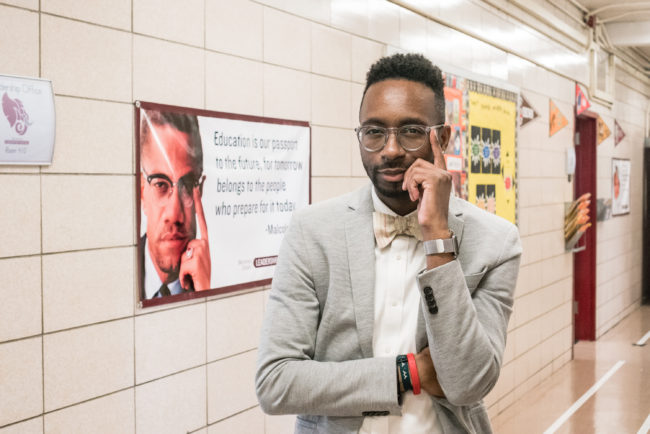01.07.19Things To Do When You Don’t Get Many Hands

In the annals of being a teacher, hoping to see 20 eager hands raised when you’ve asked a question but seeing only two or three instead is among the most common challenges.
Since this blog is a judgment free zone I just want to say it’s ok. We have all, every single one of us, been there.
But is it ok to just call on those 2 or 3 reliable hand raisers every time? No. Is it beneficial to announce to the class (with a bit of edge in your voice), “Do I need to remind you that your participation is graded?” or “I’m seeing the same three hands… I’d like to hear from some of the gentlemen in the back…” Not really.
So what can you do?
Here’s a great video of Alonte Johnson, some time English Teacher and full time Dean of Curriculum and Instruction at Uncommon’s Leadership Prep Ocean Hill Middle Academy, that shows a high level model of one solution– we call it a “Responsive Turn and Talk” because the Turn and Talk is a response to a low number of hands.
Alonte Johnson.TResponsive Turn and Talk from TLAC Blog on Vimeo.
Alonte’s 7th graders are reading Edna St. Vincent Millay’s Poem “The Courage That My Mother Had” and Alonte asks, “If she compares her mother’s courage to a rock, what associations can we make about how the speaker views her mother?”
He gets two hands. He leaves four or five seconds of Wait Time and augments it by narrating hands, counting off the number he sees slowly (“I see one… two… three hands…” to show they matter to him and he notices who volunteers. He gets two more. Better but still not enough.
Notice he’s calm here. No frustration evident. It’s a hard question.
So Alonte goes to a Turn and Talk. The presumption here is that if reinforcing the importance of hand raising isn’t enough they may well be genuinely stumped. He lets them talk it out and rehearse some initial thoughts for 30 seconds.You’ll notice this is a routine for them. They do this all the time and they know how to do it the right way so when he says, “Turn and Talk to your partner. Go!” everyone engages right away. He circulates and engages during the 30 seconds to show he cares about the quality of their thinking.
Pause. He asks for hands again. He’s casual and easy going about the question, repeating it in an easy-going tone.This time there are more hands 9 or 10 at least.
He’s sure to tell them he notices the difference, making his goal of engaging the class in the discussion transparent: “Love the increased number of hands.”
“Track Sakani,” he says.
Sakani has had time to think through her thoughts and get confident. And everyone tracking her reinforces their respect for her ideas and the value they place in her contribution. So she pretty much crushes it:
“The daughter is inspired by her mother. She compares her mother to a rock because her mother is durable…” she begins.
So… the recipe here is:
- Leave Wait Time
- Narrate Hands to Show They Matter
- Insert Turn and Talk if Necessary
- Remain easy going and supportive in tone while structured and clear on expectations
Hope you’ll let me know how it goes if you try it. Thanks to Alonte for sharing his video!
By the way, if you want to help your teachers crush Turn and Talk like Alonte does, our Turn and Talk Plug and Play might be for you!
